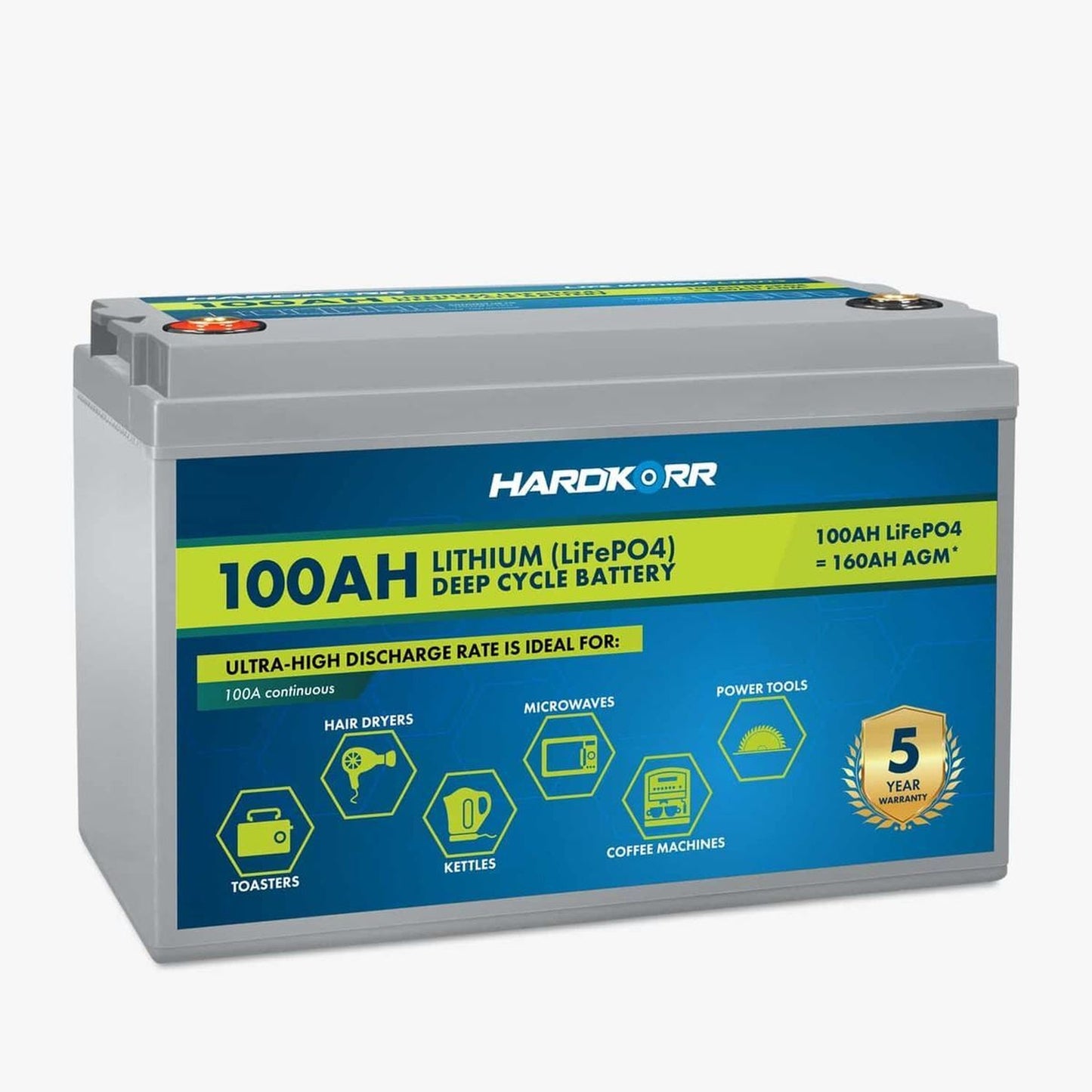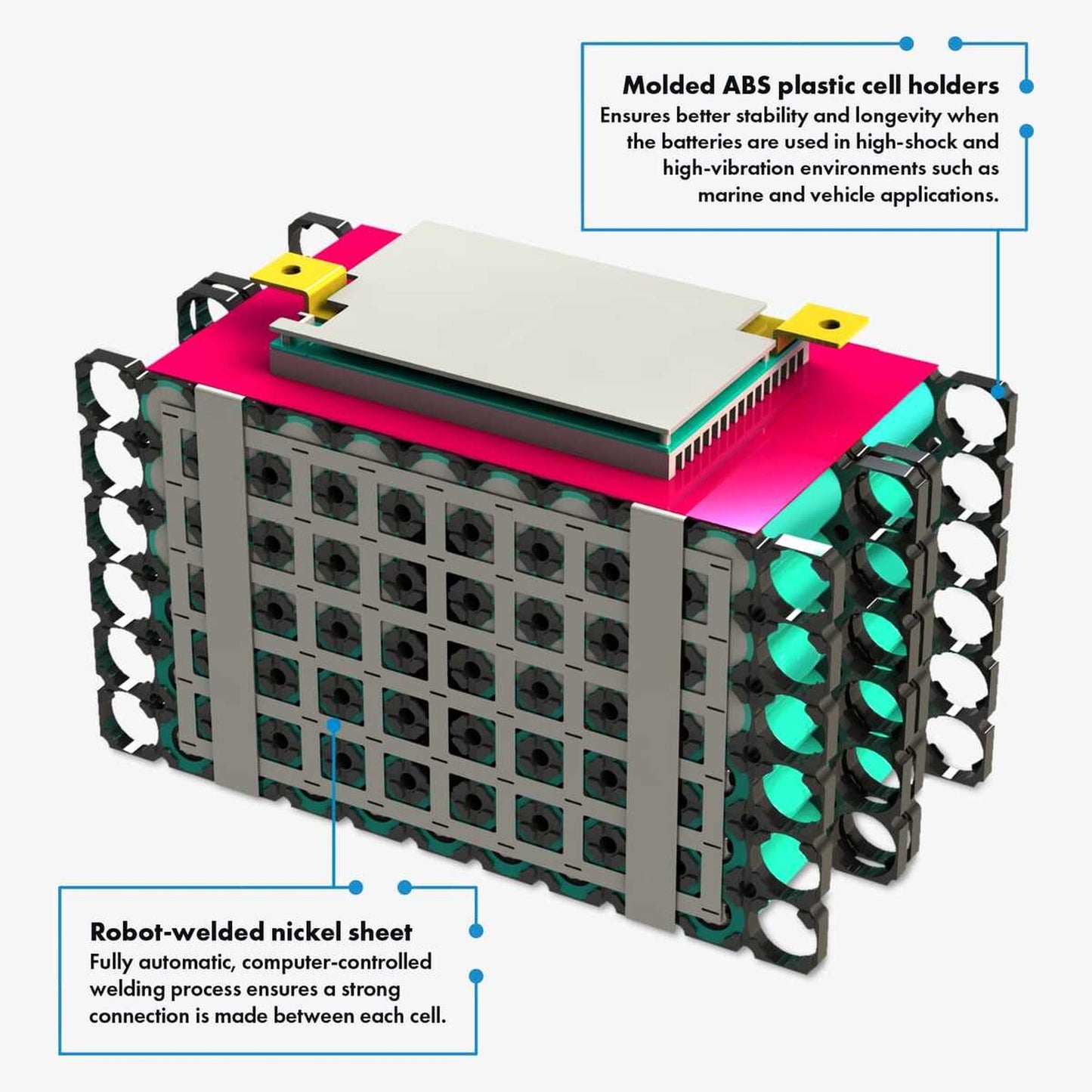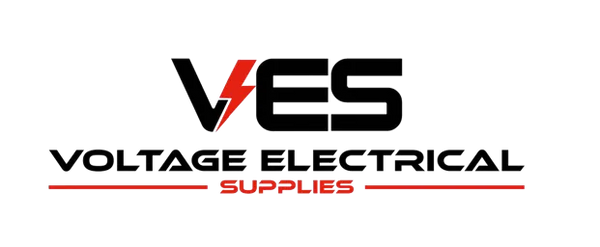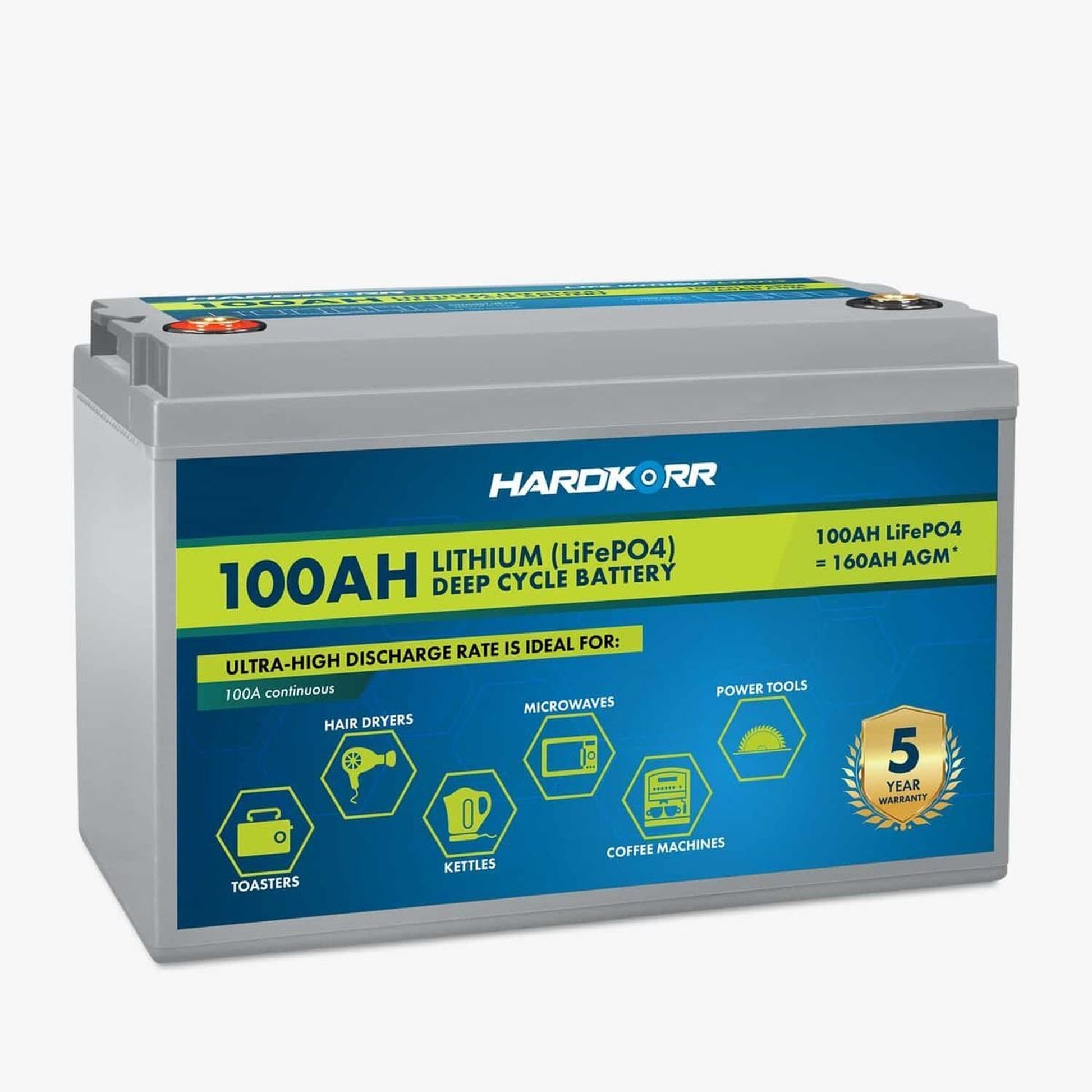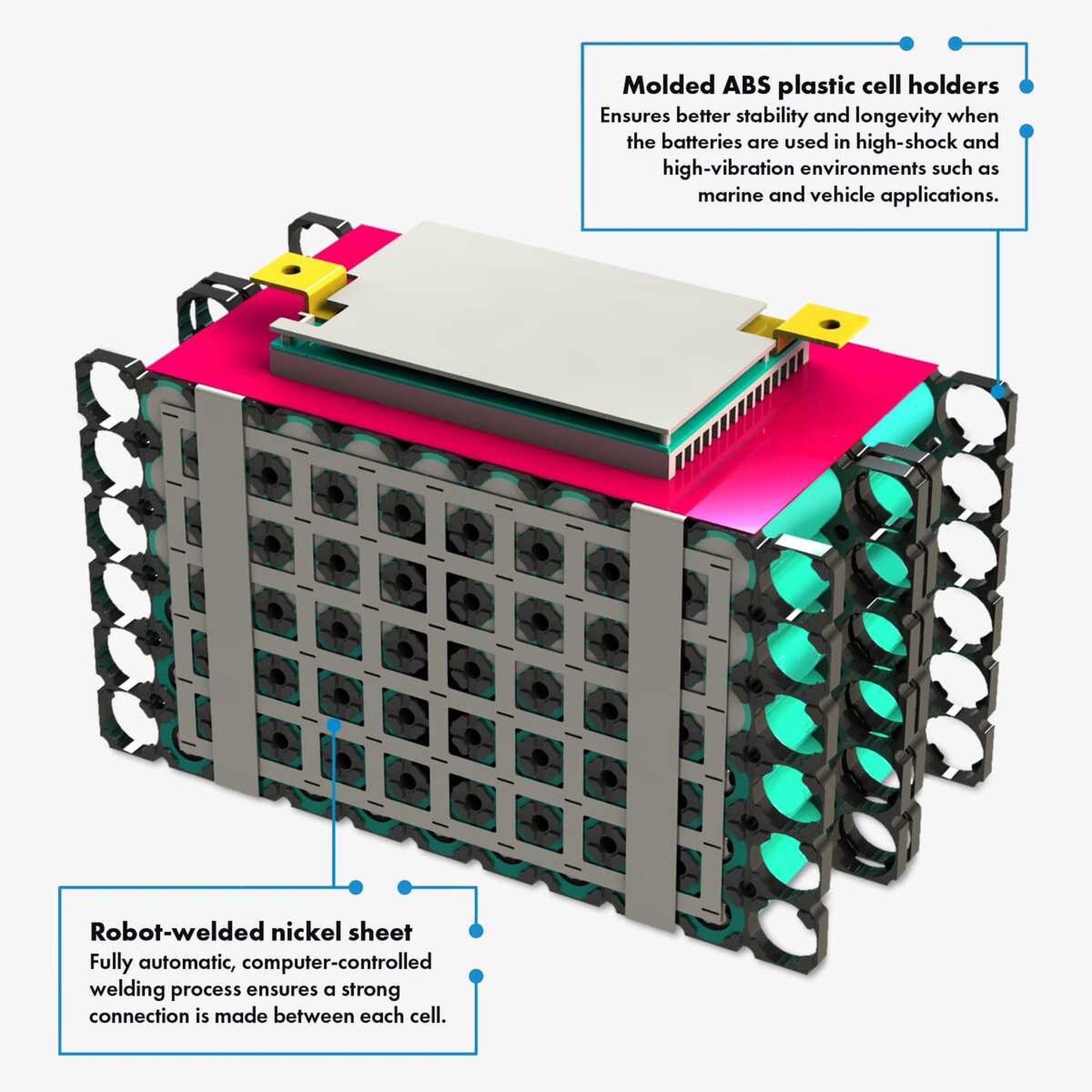Hard Korr
100Ah Lithium (LiFePO4) Deep Cycle Battery
100Ah Lithium (LiFePO4) Deep Cycle Battery
SKU:HKPBATL100C
Couldn't load pickup availability
Share
PRODUCT DETAILS
Our latest 100Ah lithium (LiFePO4) deep-cycle batteries are the most reliable, long-lasting batteries we have ever manufactured. With outstanding performance characteristics, full international certification and a 5-year Australian warranty, you’ll never be caught short of 12v power again!
These batteries are made using best-in-class robotic manufacturing processes with rigorous quality assurance (including serialised tracking) and pre-shipment cycle testing. We even store the test report for each battery for later reference if needed. That’s why we can now confidently offer you a 5-year Australian warranty.
Our 100Ah deep-cycle lithium batteries are constructed from the highest quality 26700 high-discharge cylindrical cells. The cells are carefully matched to ensure the difference in internal resistance is less than 1mΩ and voltage difference is less than 5mV. They are then ultrasonically welded using automated equipment to ensure a strong connection is made between each cell, and encased in custom-molded ABS plastic cell holders to ensure reliability and consistency even when subjected to shock and vibration.
Wait… aren’t prismatic cells better?
Prismatic and cylindrical cells both have inherent advantages and disadvantages. Batteries which use prismatic cells are somewhat lighter than those with cylindrical cells, and are easier to manufacture due to having fewer connections between cells. Cylindrical cells, on the other hand, are usually more efficient in their energy usage, produce somewhat less heat and tend to be more reliable than their prismatic counterparts.
The improved cell reliability and efficiency of cylindrical cells are what made us decide, like Tesla and Rivian, to manufacture these batteries from cylindrical cells.
Our lithium batteries have been certified as meeting all required and optional international standards for performance and safety, including:
- UN 38.3: Safety testing of lithium metal / lithium ion batteries in transport
- UL 1642: Performance/quality testing to guard against risk of fire or explosion
- IEC 62133-2:2017: Safety testing of portable lithium batteries under intended use and reasonably foreseeable misuse (including vibration test)
- IEC 62619:2017: Safety testing of lithium batteries for industrial use
- CE: The batteries meet EU safety, health and environmental protection requirements
In addition, our manufacturing facility has been certified in accordance with the following international standards:
- ISO 9001: Ensures quality management systems have been implemented
- ISO 14001: Ensures environmental management systems have been implemented
More usable power, longer life
When comparing batteries it is vitally important to understand the difference between nominal and C20 capacity. To reduce confusion and help to standardise the measurement of battery capacity, most reputable battery manufacturers will quote the capacity of their battery in amp-hours at C20 (also written as C/20), which means the number of amps the battery can deliver if discharged at a constant rate over a period of 20 hours. Using this standard, a fully-charged battery with a capacity of 100Ah could deliver 5A of current per hour for a period of 20 hours before becoming fully discharged (5A x 20h).
Some disreputable manufacturers, however, will advertise the nominal capacity of their batteries and bury the C20 rating in the fine print. Nominal capacity has no practical application and can be up to 20% higher than the C20 rating, so a battery that is advertised as a 100Ah battery might only be able to deliver 80Ah or even less.
We value our good reputation, and will always quote the C20 rating (or even higher) as the battery’s capacity. This means you can be confident that the power we say our batteries can deliver is not inflated to mislead, create confusion or invite unfair comparisons.
Why upgrade to lithium?
- Long cycle life: lasts up to 10x longer than Sealed Lead Acid (SLA) batteries
- More usable capacity: safely use up to 80% of usable capacity and 99% in an emergency (vs 50%/70% for SLA)
- Fast charging: charges up to four times faster than an equivalent AGM battery
- Light weight: About half the weight of an equivalent SLA battery
- Environmentally friendly: Non-toxic, contains no acid, can be installed in any direction
Auto-resetting over-discharge protection
The Battery Management System (BMS) inside Hardkorr lithium batteries contains a protection circuit which trips if the voltage drops below a certain setpoint. In the case of these batteries, it is set at 8.8V. This circuit prevents damage to the battery by putting it into a ‘sleep’ mode to prevent further discharge.
In the past, resetting the battery after the over-discharge protection was activated was not easy. Whilst some smart battery chargers do contain a “wake-up” function, most people had to resort to applying a constant voltage above 12V across the terminals using jumper leads or home-made wires. This was fraught with danger; damage to appliances or the battery were not uncommon.
Our batteries provide an easy solution to this problem; rather than cutting all power output, only the discharge function is switched off, meaning you will still be able to read a voltage at the battery terminals. This means the battery can still be recharged using a standard battery charger.
Specifications
| Nominal voltage | 12.8V |
|---|---|
| Capacity (C5) | 100Ah |
| Max series/parallel config | 4S/6P |
| Normal charge voltage | 14.4V ± 0.2V |
| Standard charge current | 50A |
| Max discharge current (constant) | 100A (1C)* |
| Max discharge current (pulse) | 200A |
| Discharge cut-off voltage | 8.8V |
| Charge temp | 0°C to 55°C |
| Discharge temp | -20°C to 60°C |
| Storage temp | 0°C to 45°C |
| Ingress protection | IP64 |
| Self-discharge | <3% per month |
| Weight | 12.0kg |
| Dimensions | 330mm x 173mm x 216mm (Group 27) |
| Certifications | UN 38.3, UL 1642, IEC 62133-2:2017, IEC 62619:2017, CE |
*Note on discharge current: if you connect multiple batteries in parallel, the maximum discharge current is multiplied by the number of batteries in the array. For example, if you connect two of these batteries in parallel you can discharge at up to 200A.
